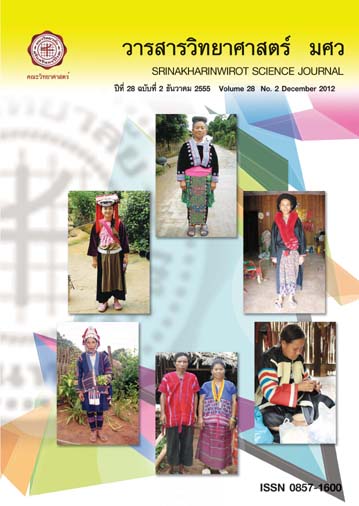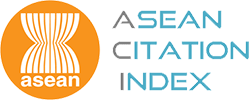วิธีการวิเคราะห์ปริมาณไอโอดีนในน้ำปัสสาวะ สำหรับการประเมินภาวะการขาดสารไอโอดีนในประชากร (Methods of Urinary Iodine Measurements: Analytical Tools for Assessment of IDD in Population)
Keywords:
ภาวะการขาดสารไอโอดีน ไอโอดีน น้ำปัสสาวะ การวิเคราะห์ไอโอดีน ปฏิกิริยา Sandell and Kolthoff reaction iodine deficiency disorder (IDD), iodine, urine, iodine analysis, Sandell and Kolthoff reactionAbstract
ไอโอดีนเป็นสารอาหารที่จำเป็นต่อร่างกาย ประชากรจำนวนมากเกือบถึงหนึ่งในสามของโลกกำลังประสบปัญหาการได้รับไอโอดีนที่ไม่เพียงพอ และมีความเสี่ยงที่จะพัฒนาอาการไปสู่ภาวะการเป็นโรคขาดสารไอโอดีน ในหลายประเทศรวมทั้งประเทศไทยได้มีการส่งเสริมการบริโภคไอโอดีนในรูปแบบต่างๆ และจัดทำระบบเฝ้าระวังและติดตามผล ในการศึกษาวิทยาการระบาดมักใช้ความเข้มข้นของไอโอดีนในน้ำปัสสาวะเป็นดัชนีบ่งชี้ภาวะการขาดสารไอโอดีนในประชากร อย่างไรก็ดีพบว่าวิธีการวิเคราะห์ที่ใช้เป็นประจำในห้องปฏิบัติการยังมีไม่มากนัก และวิธีดังกล่าวมักต้องการผู้ทำการทดลองที่มีทักษะในทางปฏิบัติการสูง เช่น การย่อยตัวอย่างเพื่อกำจัดสารรบกวนก่อนทำการทดสอบด้วยเครื่อง spectrophotometer โดยใช้ปฏิกิริยา Sandell and Kolthoff อาศัยการเป็นตัวเร่งปฏิกิริยาของไอโอไดด์ที่มีต่อปฏิกิริยารีดอกซ์ระหว่าง Cerium(IV) กับ Arsenic(III) หรือใช้เครื่องมือการวิเคราะห์ขั้นสูงราคาแพงอย่าง inductively coupled plasma mass spectrometer ทำให้ยังมีปัญหาของการติดตามวัดผลที่ยังไม่เพียงพอกับความต้องการในพื้นที่ที่มีปัญหาความเสี่ยงของการขาดไอโอดีน ในบทความนี้จะนำเสนอการวิเคราะห์ข้อดีและข้อเสียในแต่ละเทคนิค สำหรับการใช้งานเพื่อประเมินภาวะการขาดสารไอโอดีนของประชากร Iodine is an essential element for human. Nearly a third of the global population has inadequate iodine intake and is at risk of developing iodine deficiency disorder (IDD). Most countries, including Thailand, have iodine supplementation and monitoring programs. For epidemiological studies, urinary iodine (UI) is normally used as the biomarker. However, only a few methods are currently used routinely for analysis. These methods either require qualified personnel with skills or expensive instruments. The most common method employs oxidative sample digestion to remove potential interference prior to analysis by a spectrophotometric method with Sandell and Kolthoff reaction. The reaction is based on catalytic reaction of iodide on a redox reaction between Ce(IV) and As(III). Another method often used for UI measurement is based on sophisticated instrument of inductively coupled plasma mass spectrometer. These reasons cause insufficient routine analysis in an area with adequate iodine intake. This review demonstrates some advantage and disadvantage among the methods concerning their applications for assessment of IDD in population.Downloads
Download data is not yet available.
Downloads
Published
2012-12-29
How to Cite
รัตนวิมานวงศ์ น. (2012). วิธีการวิเคราะห์ปริมาณไอโอดีนในน้ำปัสสาวะ สำหรับการประเมินภาวะการขาดสารไอโอดีนในประชากร (Methods of Urinary Iodine Measurements: Analytical Tools for Assessment of IDD in Population). Science Essence Journal, 28(2). Retrieved from https://ejournals.swu.ac.th/index.php/sej/article/view/2927
Issue
Section
บทความวิชาการ








